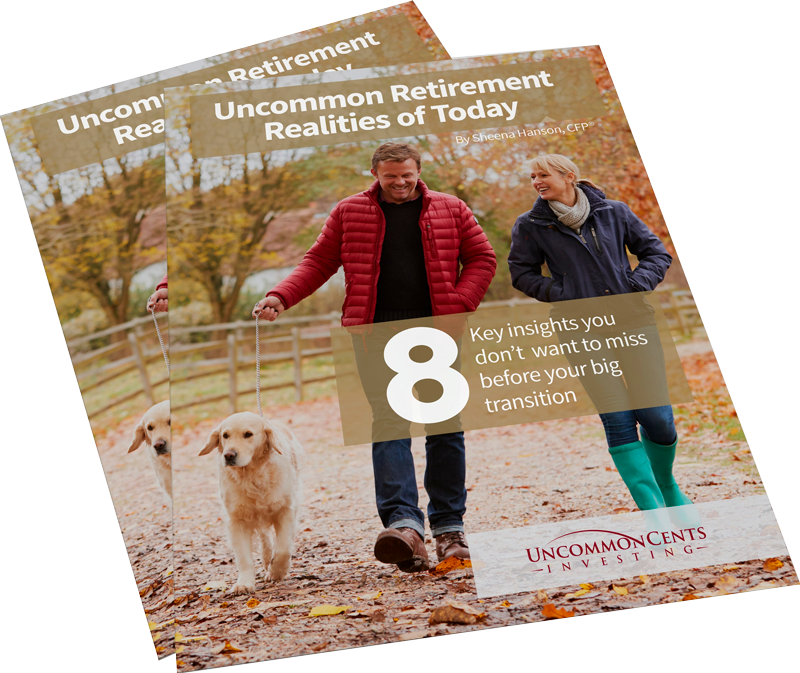You’ve tied up all the loose ends before walking out the door on your last day, the farewell office party’s over, and the future stretches out like an endless vacation…you’re finally on the brink of swapping long working hours for getting outdoors or spending time in your workshop. But as thrilling as that sounds, one question might be nagging at you, “How do I ensure my retirement savings last as long as my lifetime?”
The transition to retirement can be overwhelming, but it’s entirely doable with strategic planning and execution. Some of which you’ve already done in order to have gotten this far. To ensure your hard-earned savings provides a comfortable lifestyle post-retirement, you’ll want to shift your mindset regarding your investments and focus on how to generate income.
Strategic Spending: The Switch from Saver to Spender
Moving from saving to spending in retirement can be a real mind-bender. You’ve spent years, maybe decades, in accumulation mode stacking up those dollars like a champ. Now it’s time to kick back and enjoy the fruits of your labor.
Most people want to be able to maintain their lifestyle post-retirement. In order to do that, you must understand your spending patterns and account for larger, infrequent expenses. Evaluate your future budget by categorizing expenses into three categories: essentials, lifestyle-related, and unpredictable costs. This step is critical to know exactly how much you’ll need monthly and annually in your retirement years.
And relax, you’ve got this. Remember, this is the finish line you’ve been sprinting towards. You aren’t likely to change your spending habits just because you retired, most people don’t. But you’ll want to do the homework of understanding your cash flow to be confident your income will fully support your life.
The Balancing Act: Growth vs. Security
Consider retirement as the world’s most prolonged balancing act—a tightrope walk between the opposing forces of growth and security. On one side of this metaphorical tightrope, you want your money to grow. This isn’t an exercise in greed but rather a necessary defense against the inevitable creep of inflation.
Inflation steadily increases the cost of goods and services over time, eroding your purchasing power. Without growth in your investments to counteract this effect, your retirement savings could slowly but surely lose their ability to support the lifestyle you’ve planned.
This pursuit of growth isn’t without its perils. As you inch along the tightrope, looking for opportunities to grow your nest egg, the risk of market downturns looms on the other side. After all, financial markets can be volatile, and the value of your investments can go down as well as up. This is a particularly significant concern for retirees, who may not have the luxury of time to wait out a market downturn and recover their losses.
So, striking the right balance between these opposing forces is crucial. It’s about finding that sweet spot where your money works hard enough to outpace inflation and grow but not so hard that it takes undue risk. This may involve diversifying your investment portfolio across various assets, sectors, and geographical areas to spread the risk. It could also mean adjusting your investment strategy as you age, gradually shifting from higher-risk, higher-return assets to safer, lower-volatility ones as you near retirement.
The Bucket Strategy: Pails of Potential
Picture your retirement funds as a series of buckets brimming with potential, each standing by to replenish your bank account and keep it as full as a beach at high tide. Each bucket serves a different purpose, reflecting the varying needs and risks you’ll face at various stages of your retirement. Instead of seeing your retirement savings as one monolithic sum, you separate it into different “buckets” based on when you’ll need to access the funds.
The first bucket (1-5 years) contains enough money to cover your living expenses for the short term. This bucket is usually filled with safer, liquid investments, such as money market funds or short-term bonds, that can be easily converted into cash without worrying about market volatility.
The second bucket (5-10 years) is designed for the medium term. This bucket might contain a balanced mix of investments, such as bonds and dividend-paying stocks, offering a moderate risk and return level.
The final bucket (10+ years) is designed for the long term, years into retirement and beyond. This bucket could contain riskier, higher-growth investments. You won’t need to touch this money for a long time, giving it more time to grow and recover from any short-term market fluctuations.
The beauty of this strategy is that it provides a clear, visual way to manage your retirement savings. Rather than withdrawing funds at random, you can make strategic decisions based on your current needs and future goals. The bucket approach is sometimes taken literally as a strategy, but we tend to approach it more metaphorically.
Are You Ready?
Remember, this isn’t about scraping by; it’s about living the life you’ve dreamt of. Because, after a lifetime of hard work and diligent saving, isn’t that what you deserve–to enjoy the fruits of your labor without worry?
The advisors at Uncommon Cents Investing are here to help you navigate managing your retirement funds and spending it.. Especially if you are less than 5 years away from retirement, it’s time to start planning. Reach out, and let’s pave the path to a future where you can truly thrive!


